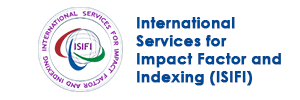
Journal Basic Info
- Impact Factor: 1.995**
- H-Index: 8
- ISSN: 2474-1647
- DOI: 10.25107/2474-1647
Major Scope
- Robotic Surgery
- Gynecological Surgery
- Orthopaedic Surgery
- Urology
- Breast Surgery
- Transplant Surgery
- Vascular Surgery
- Colon and Rectal Surgery
Abstract
Citation: Clin Surg. 2019;4(1):2524.Research Article | Open Access
Non Protein Calorie: Nitrogen Ratio (NPC/N) as a Determinant of Clinical Outcome in Critically Illness
Eri Miyuki1,2, Mari Hasegawa3, Yoko Hokotachi4, Shohei Iijima5, Masahiko Yano6 and Teruyoshi Amagai7
1Department of Food Sciences and Nutrition, Graduate School of Environmental Sciences, Mukogawa Women’s University, Japan
2Department of Food and Nutrition, Ube Frontier College, Japan
3Department of Clinical Nutrition, Yokkaichi Hazu Medical Center, Japan Community Health Care Organization (JCHO), Japan
4Department of Clinical Nutrition, Takarazuka Dai-ichi Hospital, Japan
5Department of Surgical Oncology, Osaka International Cancer Institute, Japan
6Department of Surgery, Osaka International Cancer Institute, Japan
7Department of Food Sciences and Nutrition, School of Environmental Sciences, Mukogawa Women’s University, Japan
*Correspondance to: Teruyoshi Amagai
PDF Full Text DOI: 10.25107/2474-1647.2524
Abstract
Aim: To test the hypothesis of Non protein Calorie: Nitrogen Ratio (NPC/N) as a determinant of clinical outcome in critical illness. Methods: All consecutive patients with esophageal cancer admitted to ICU were enrolled. Collected data: 1) Demographics, age, sex, height, body weight and BMI at admission, CCI, blood loss, and operation time, 2) Laboratory, CRP, 3) Nutritional, energy and protein intake, NPC/N, 4) Outcomes, and the Length of Stay (LOS) in ICU, highest CRP, and total insulin dose. Analysis 1: All patients were divided into two groups by median values of energy, protein and NPC/N. Outcome parameters were compared between the two groups. Analysis 2: All patients were divided into two groups by NPC/N < vs. ≥ 150 and other cutoff values. All collected data were compared between the two groups. Analysis 3: Multiple logistic regression analysis was conducted to draw an Odds Ratio (OR) for each variable to predict a shorter LOS in ICU. Results: 69 out of 91 patients were analyzed. Result 1: Subjects with protein intake <0.48 g/kg/day showed a significantly shorter LOS in ICU (4.0 vs. 5.0, p=0.011). Result 2: Subjects with NPC/N ≥ 150 showed a significantly shorter LOS in ICU (p=0.034). Result 3: daily protein intake and NPC/N were determinants of clinical outcome (OR=0.005, 0.967, respectively). Conclusion: We concluded that NPC/N could be identified as a determinant of clinical outcome when it is set at 150. From the analysis of all consecutive patients after esophageal surgery, we conclude that NPC/N can be identified as a determinant of clinical outcome when it is set at 150.
Keywords
Cite the article
Miyuki E, Hasegawa M, Hokotachi Y, Iijima S, Yano M, Amagai T. Non Protein Calorie: Nitrogen Ratio (NPC/N) as a Determinant of Clinical Outcome in Critically Illness. Clin Surg. 2019; 4: 2524..













